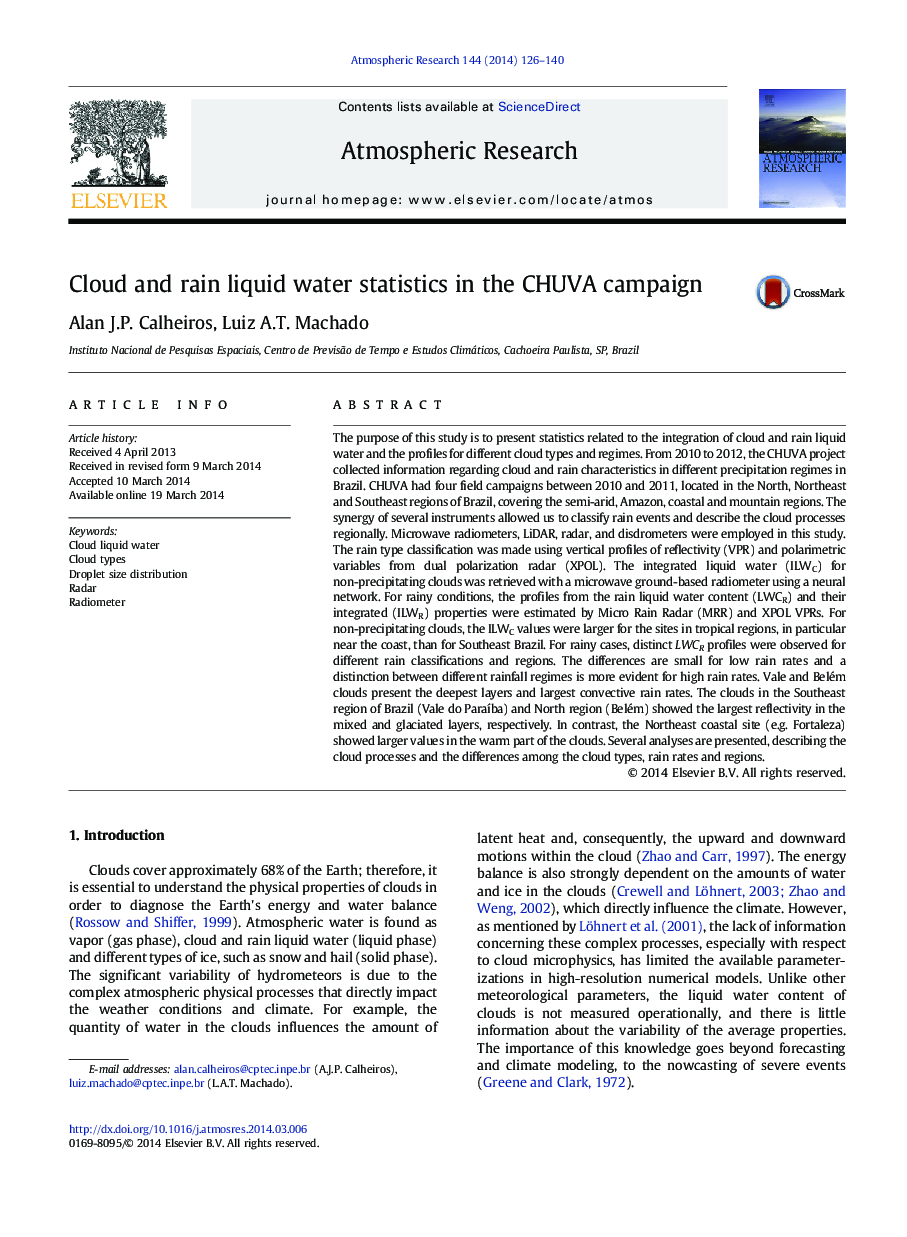| Article ID | Journal | Published Year | Pages | File Type |
|---|---|---|---|---|
| 6343600 | Atmospheric Research | 2014 | 15 Pages |
Abstract
The purpose of this study is to present statistics related to the integration of cloud and rain liquid water and the profiles for different cloud types and regimes. From 2010 to 2012, the CHUVA project collected information regarding cloud and rain characteristics in different precipitation regimes in Brazil. CHUVA had four field campaigns between 2010 and 2011, located in the North, Northeast and Southeast regions of Brazil, covering the semi-arid, Amazon, coastal and mountain regions. The synergy of several instruments allowed us to classify rain events and describe the cloud processes regionally. Microwave radiometers, LiDAR, radar, and disdrometers were employed in this study. The rain type classification was made using vertical profiles of reflectivity (VPR) and polarimetric variables from dual polarization radar (XPOL). The integrated liquid water (ILWC) for non-precipitating clouds was retrieved with a microwave ground-based radiometer using a neural network. For rainy conditions, the profiles from the rain liquid water content (LWCR) and their integrated (ILWR) properties were estimated by Micro Rain Radar (MRR) and XPOL VPRs. For non-precipitating clouds, the ILWC values were larger for the sites in tropical regions, in particular near the coast, than for Southeast Brazil. For rainy cases, distinct LWCR profiles were observed for different rain classifications and regions. The differences are small for low rain rates and a distinction between different rainfall regimes is more evident for high rain rates. Vale and Belém clouds present the deepest layers and largest convective rain rates. The clouds in the Southeast region of Brazil (Vale do ParaÃba) and North region (Belém) showed the largest reflectivity in the mixed and glaciated layers, respectively. In contrast, the Northeast coastal site (e.g. Fortaleza) showed larger values in the warm part of the clouds. Several analyses are presented, describing the cloud processes and the differences among the cloud types, rain rates and regions.
Related Topics
Physical Sciences and Engineering
Earth and Planetary Sciences
Atmospheric Science
Authors
Alan J.P. Calheiros, Luiz A.T. Machado,
